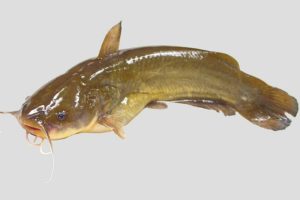 With their large brains, sophisticated sense organs and complex nervous systems, cephalopods could teach us a thing or two about learning, memory, and adaptability. But despite their evolutionary, biological, and economic significance, their genome information is still limited to a few species.
With their large brains, sophisticated sense organs and complex nervous systems, cephalopods could teach us a thing or two about learning, memory, and adaptability. But despite their evolutionary, biological, and economic significance, their genome information is still limited to a few species.
To bridge this gap, a team of Korean scientists has assembled the genome of the common long-arm octopus (Octopus minor) using PacBio technology to sequence both the DNA and RNA of the emerging model species.
Found in Northeast Asia, particularly in coastal mudflats of South Korea, China, and Japan, O. minor has become a major commercial fishery product with a high annual yield. They are also promising organisms for studies of the molecular basis of plasticity and their adaptation to the harsh environmental conditions in mudflats that are subject to temperature changes, steep salinity and pH gradients, varying oxygen availability, wave action and tides.
With this in mind, Hye Suck An from the National Marine Biodiversity Institute of Korea and colleagues from Korea Polar Research Institute, Chungbuk National University, and the University of Science & Technology of Yuseong-gu, Daejeon, created a 5.09 Gb assembly of the challenging genome with 30,010 genes, nearly half of which were composed of repeat elements.
Additionally, they annotated the genome using the Iso-Seq method on pooled RNA from thirteen organs. This enabled them to identify characteristics like intron length, protein-coding genes and transposable elements.
Together, this data enabled them to elucidate the molecular mechanisms underlying the O. minor’s adaptations.
As described in a paper in GigaScience, the team also compared their results with the published genome and multiple transcriptomes of the California two-spot octopus (Octopus bimaculoides) to study their evolution.
“We discovered that they evolved recently and independently from the octopus lineage during the successful transition from an aquatic habitat to mudflats,” the authors stated. “We also found evidence suggesting that speciation in the genus Octopus is closely related to the gene family expansion associated with environmental adaptation.”
Curiosity of the Catfish
 A reference genome for another important aquaculture species, the yellow catfish (Pelteobagrus fulvidraco), has also been created by scientists in China.
A reference genome for another important aquaculture species, the yellow catfish (Pelteobagrus fulvidraco), has also been created by scientists in China.
Popular in fisheries of Southern China, the species has suffered from germplasm degeneration and poor disease resistance. Similar to other aquaculture species, like the previously featured tilapia, sex is an important commercial trait, with adult males growing two- to three-fold bigger than females.
In order to decipher the economic traits and sex determination of the species, the multi-institutional team constructed “the first high-quality chromosome-level genome assembly” of the yellow catfish, using PacBio sequencing as the base technology to build long contigs.
As reported in GigaScience, they annotated the assembly, identifying 24,552 protein-coding genes, and explored the phylogenetic relationships of the yellow catfish with other teleosts. They found almost 2,000 gene families that were expanded in the yellow catfish, mainly enriched in immune system, signal transduction, glycosphingolipid biosynthesis and fatty acid biosynthesis, providing a rich path for future studies.
“We believe that the high-quality reference genome generated in this work will … accelerate the development of more efficient sex control techniques and improve the artificial breeding industry for this economically important fish species,” the authors wrote.
February 18, 2019 | Plant + animal biology